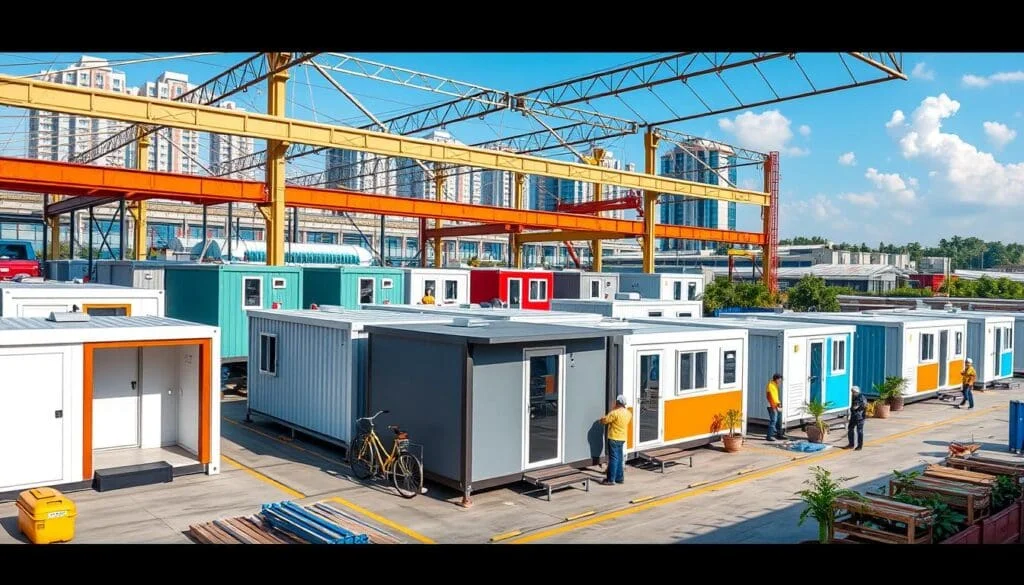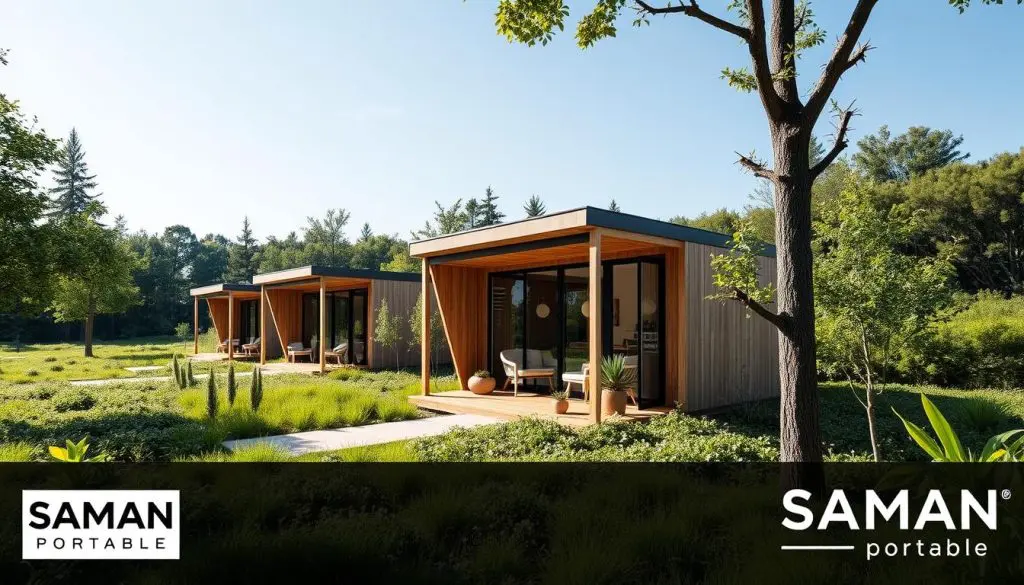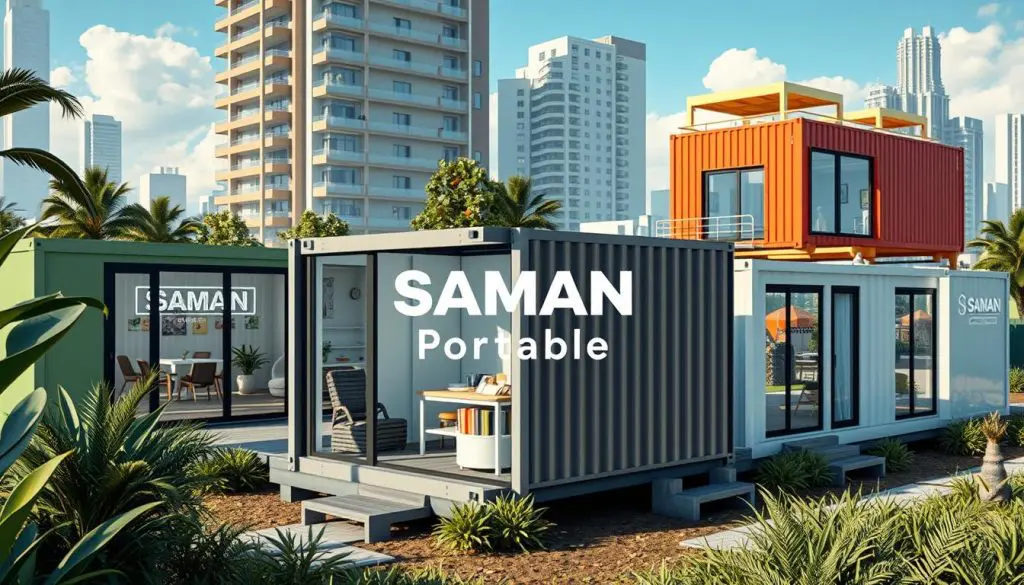Movable Small Houses: Embrace a Flexible, Minimalist Lifestyle
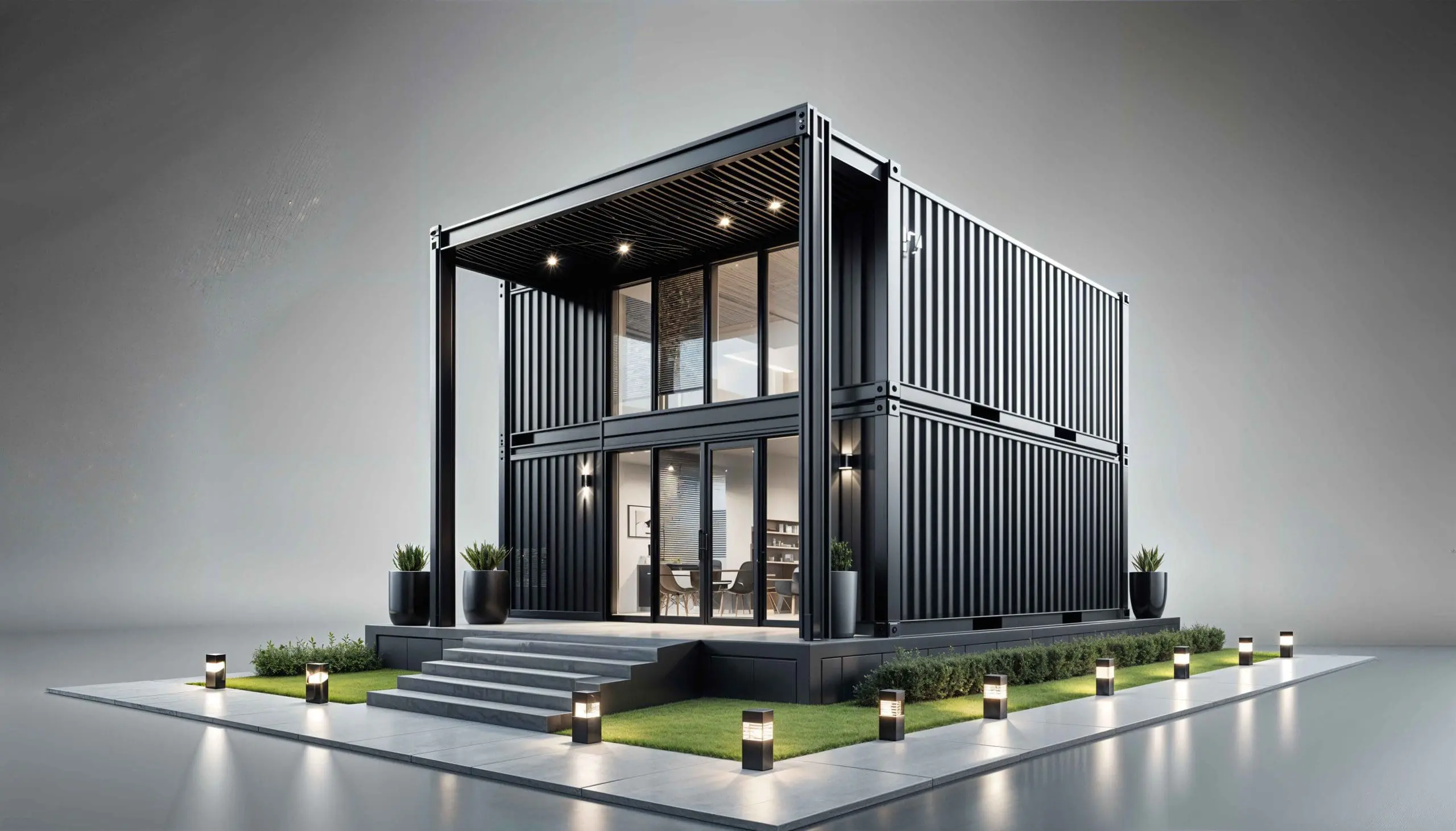
Introduction to Movable Small Houses
Movable small houses have transformed the way people approach housing, offering a flexible, budget-friendly, and sustainable alternative to traditional homes. These compact homes are designed for mobility, allowing homeowners to transport their living space to new locations as needed. Ideal for anyone seeking a minimalist lifestyle, movable small houses can be adapted for a variety of purposes, including full-time living, vacation retreats, or even mobile office spaces. With a small footprint, these homes promote an eco-friendly lifestyle, reducing energy consumption and encouraging efficient use of resources.
Unlike conventional homes, a movable small house is crafted to maximize functionality in a limited space. This emphasis on space efficiency encourages a minimalist approach to living, where homeowners prioritize essentials and make use of multifunctional furniture and storage solutions. The result is a comfortable, uncluttered living environment that supports a simpler, more focused lifestyle. For those interested in learning more about the advantages of mobile living, Saman Portable’s Tiny Home Mobile Benefits Guide provides insights into the cost-saving and environmental benefits of tiny homes.
Movable small houses come in various styles and materials, allowing homeowners to choose an option that fits their personal preferences and needs. Some prefer the rustic charm of wood-paneled cabins, while others are drawn to modern designs that incorporate steel or glass for a sleek look. Porta Cabins from Saman Portable are one such option, offering a portable structure that can be tailored to suit residential, commercial, or recreational use. These cabins are designed to provide a sturdy, comfortable space that can be set up in diverse environments, from rural retreats to bustling city areas.
Another popular choice for a movable home is the Shipping Container Tiny House. These container-based homes combine durability with modern design, creating a compact living solution that’s both stylish and functional. Constructed from high-quality steel, container homes are resilient and easy to maintain, making them ideal for people who value practicality and style. For more about Saman Portable’s mission and dedication to creating innovative living spaces, visit the About Us page. To discuss options or start planning your own movable small house, feel free to reach out through our Contact page.
Types of Mobile Tiny Houses
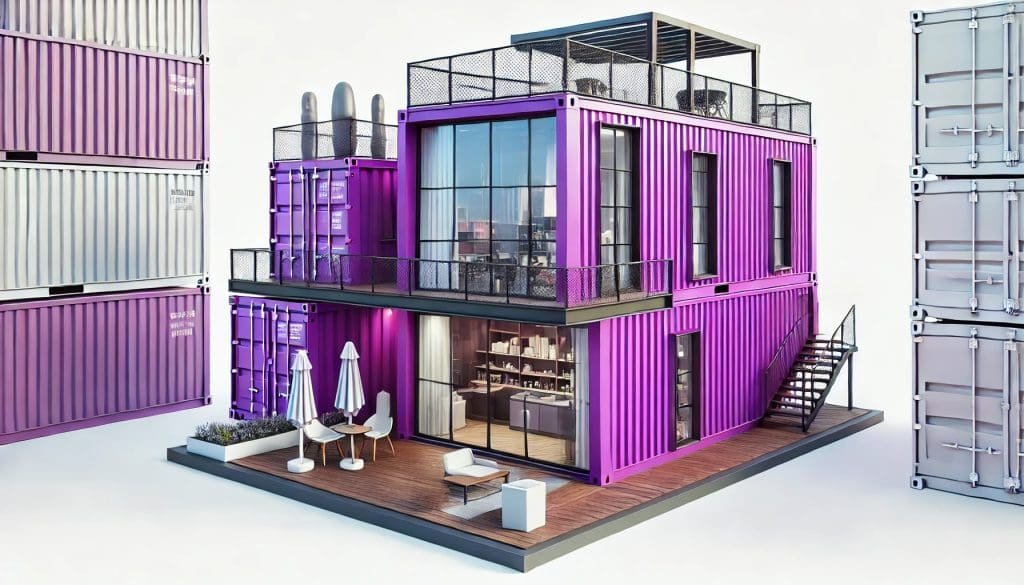
Mobile tiny houses come in various styles, each designed to cater to different needs and lifestyles. From trailer-based tiny homes to container houses, each type offers unique advantages in terms of mobility, durability, and aesthetic appeal. Choosing the right type depends on factors such as intended use, frequency of relocation, and personal style preferences. Here’s a look at some of the popular types of mobile tiny houses.
Trailer-Based Tiny Homes
Trailer-based tiny homes are perhaps the most recognized form of mobile tiny houses. Built on wheels, these homes are designed to be towed by a vehicle, allowing homeowners to relocate their house whenever they wish. This option is ideal for people who want the freedom to travel and take their living space with them, as it provides maximum mobility. Trailer-based homes come in a variety of sizes and layouts, from single-level designs to lofted layouts that maximize vertical space. Since these homes are built to be lightweight, they’re easy to move but still provide essential features like a sleeping area, kitchen, and bathroom.
Shipping Container Tiny Houses
Shipping container homes offer a durable, modern option for those interested in a mobile tiny house with a unique look. Constructed from recycled shipping containers, these homes are built to withstand harsh weather and provide a sturdy structure that can be relocated as needed. While not as lightweight as trailer-based homes, container homes are still portable and can be transported to new locations using specialized equipment. The Shipping Container Tiny House from Saman Portable is an excellent example of this type, combining the resilience of steel with stylish, functional interiors that make it ideal for a variety of uses, from permanent residences to vacation retreats.
Modular Tiny Houses
Modular tiny houses are another popular option for those seeking flexibility. These homes are built in sections, or modules, which are then transported to a site and assembled. While modular homes are less mobile than trailer-based homes, they offer the advantage of a quick setup and can be disassembled for relocation. This type of mobile tiny house is particularly useful for people who need temporary housing solutions, such as workers on a project site or families building a permanent home. Porta Cabins by Saman Portable can function similarly, providing a movable structure with the versatility and comfort needed for both short-term and long-term use.
RV-Style Tiny Homes
RV-style tiny homes combine the features of recreational vehicles with the comforts of a tiny house. These homes are typically built on an RV chassis, which allows them to be driven to different locations rather than towed. They are ideal for people who plan to travel frequently and want a fully mobile living space. With built-in features like kitchens, bathrooms, and sleeping areas, RV-style tiny homes offer a complete living solution in a compact form.
Tiny Cabins on Wheels
Tiny cabins on wheels bring a rustic touch to mobile living. Often made of wood or other natural materials, these cabins are designed to create a cozy, cabin-like atmosphere while still being mobile. They are popular among outdoor enthusiasts and nature lovers who want a comfortable home that can be set up in remote or scenic locations. Unlike traditional trailers, tiny cabins on wheels often incorporate aesthetic details that make them feel more like a cozy retreat.
Each of these mobile tiny house options offers a unique way to experience compact, movable living. From the modern appeal of Shipping Container Tiny Houses to the rustic charm of tiny cabins on wheels, there is a mobile tiny house to fit every preference and need.
Key Benefits of Tiny Homes Movable by Design
Tiny homes designed for mobility offer a unique blend of flexibility, affordability, and environmental sustainability. These homes have gained popularity as they allow people to embrace a minimalist lifestyle while providing the freedom to change locations without giving up the comforts of home. Here are some of the top benefits of choosing a movable small house.
1. Cost-Effective Living Solution
One of the most appealing benefits of movable tiny homes is their affordability. Compared to traditional houses, tiny homes require less construction material, smaller land plots, and lower utility bills, which significantly reduces both the initial and ongoing costs. This affordability makes them accessible to a wide range of people, from young professionals and retirees to families looking for budget-friendly housing. In addition, since movable homes are designed to maximize efficiency, they often incorporate energy-saving features like solar panels and efficient insulation, which further helps reduce utility costs over time.
2. Flexibility and Mobility
The ability to relocate a tiny home is a major draw for those who value flexibility. Movable small houses provide the opportunity to live in different locations without the need to purchase multiple properties. Whether you want to explore new areas or simply enjoy seasonal changes, a mobile tiny house makes it easy to experience different environments. Many people choose to live in nature-rich settings, moving their home closer to mountains, lakes, or forests whenever they please. For those interested in flexible and portable housing options, Porta Cabins offer a versatile solution that can be relocated as needed while maintaining a comfortable living environment.
3. Environmentally Friendly Lifestyle
Tiny homes, especially movable ones, encourage a sustainable lifestyle. Their small footprint means less energy consumption for heating, cooling, and lighting, making them more eco-friendly than traditional houses. Many movable homes are built with sustainable materials and often include off-grid options like composting toilets, rainwater collection, and solar power systems. These features help reduce the environmental impact of living while promoting a lifestyle that aligns with green principles. By downsizing and using fewer resources, homeowners of tiny movable homes can enjoy a lower environmental footprint.
4. Minimalist Living
Movable tiny homes promote a minimalist lifestyle, where homeowners focus on essential items and experiences rather than accumulating possessions. With limited space, residents are encouraged to be selective with belongings, which often leads to a decluttered, organized, and stress-free living environment. This approach to living fosters a sense of freedom, allowing people to focus on experiences, travel, and personal development rather than being weighed down by excess material items.
5. Versatile Use Cases
Movable small houses can serve a variety of purposes beyond residential living. Many people use them as vacation homes, rental properties, or even mobile offices. The Shipping Container Tiny House from Saman Portable is an example of a versatile, durable option that can function as a living space, workspace, or even a unique retail setup. This versatility makes movable tiny homes a valuable investment, as they can be adapted to meet different needs over time.
In summary, tiny homes designed for mobility provide a lifestyle that’s both practical and sustainable. With lower costs, minimal environmental impact, and the freedom to move as desired, they offer a refreshing alternative to conventional housing.
Comparing Mobile Tiny House Sizes and Layouts
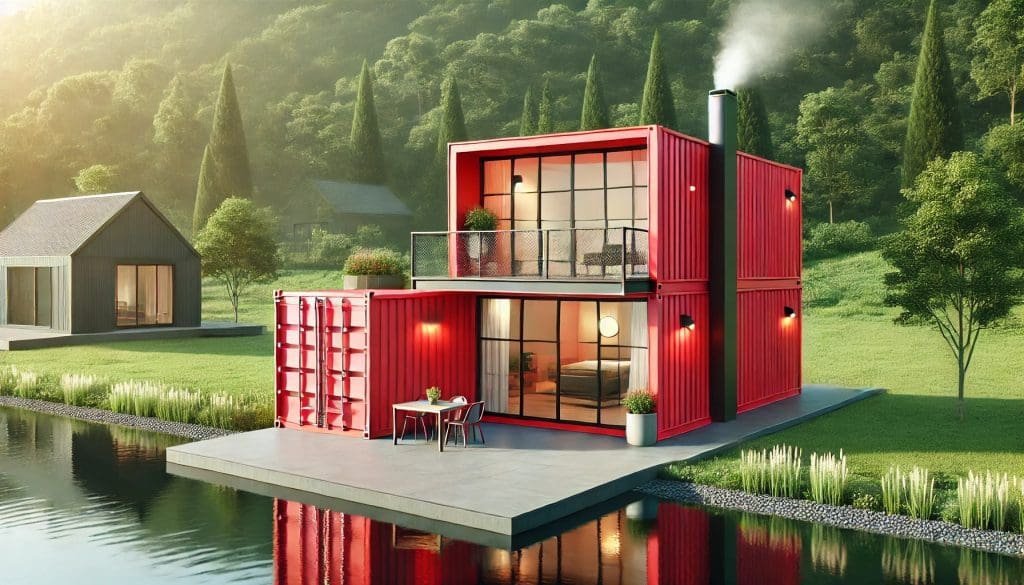
Mobile tiny houses come in a variety of sizes and layouts, allowing homeowners to choose the design that best fits their lifestyle and space requirements. While all tiny homes prioritize space efficiency, different layouts cater to various needs, whether it’s maximizing storage, creating multi-functional spaces, or providing open areas for socializing. Below, we’ll explore common sizes and layouts for mobile small houses and the unique features each offers.
Small, Compact Layouts for Minimalist Living
For those who prefer a minimalist lifestyle, compact layouts in mobile tiny houses are ideal. These layouts typically range from 100 to 200 square feet and focus on essential living spaces without unnecessary extras. Compact designs often include a combined kitchen and living area, a small bathroom, and a sleeping loft or convertible furniture. This type of layout is suitable for individuals or couples who prioritize simplicity and want to minimize possessions. Despite their smaller size, these layouts make effective use of every square foot through clever design and multi-functional furniture.
Mid-Size Layouts with Open Floor Plans
Mobile tiny houses with open floor plans provide a sense of spaciousness within a limited footprint. These homes often range from 200 to 300 square feet, allowing for slightly larger rooms and more flexibility in layout. Open floor plans typically combine the living, kitchen, and dining areas into one cohesive space, which creates an inviting environment for socializing or entertaining guests. This design is especially popular in Porta Cabins, which can be customized to provide an open, airy feel without compromising functionality. By integrating multi-purpose furniture, mid-size layouts are versatile enough for both single occupants and small families.
Larger Mobile Tiny Homes with Defined Rooms
For those who require more defined spaces, larger mobile tiny homes (300+ square feet) offer distinct areas for living, dining, sleeping, and working. This layout is well-suited for small families or individuals who work from home and need dedicated workspace. A larger layout allows for separate rooms or partitions, which can help maintain privacy and reduce noise between areas. In these homes, the sleeping area may be on the main floor or in a loft, while kitchens and bathrooms often have full-sized appliances. Shipping Container Tiny Houses are an excellent choice for those who want a sturdier, larger structure with room for customization.
Lofted Layouts for Additional Space
Lofted layouts are a popular choice in mobile tiny homes as they create extra space without expanding the footprint. By placing the sleeping area in an overhead loft, more room is available on the main floor for living, dining, or storage. Lofted designs are especially effective in smaller mobile homes, where every inch of space counts. A loft provides privacy and comfort for sleeping, while the main level remains open and functional.
Conclusion: Choosing the Right Layout
Choosing the right size and layout for a mobile tiny house depends on individual needs and preferences. Whether you prefer the compact efficiency of a minimalist layout or the versatility of a larger, lofted design, there is a mobile tiny house to suit every lifestyle.
Essential Features to Consider in Tiny House Mobile Living
When it comes to tiny house mobile living, certain features can make a big difference in comfort, functionality, and overall satisfaction. A well-designed mobile tiny house maximizes its limited space through strategic layouts, energy-efficient materials, and multi-functional amenities. Here are some essential features to consider when choosing or designing a mobile tiny house.
1. Energy Efficiency and Insulation
Since tiny houses are compact, they can be sensitive to external temperatures. Energy-efficient materials and insulation are essential to keep the interior comfortable year-round. Insulation not only helps maintain a stable temperature but also reduces heating and cooling costs, which is particularly beneficial for off-grid homes. Double-glazed windows, insulated walls, and energy-efficient appliances can make a mobile tiny house more sustainable and cost-effective.
2. Multi-Functional Furniture and Storage Solutions
With limited space, mobile tiny houses rely heavily on multi-functional furniture and smart storage solutions. Furniture that serves multiple purposes, such as a sofa that converts into a bed or a dining table that folds away, is a valuable addition to any tiny home. Additionally, built-in storage solutions like under-bed drawers, overhead cabinets, and wall-mounted shelves help keep the space organized and free from clutter. These features ensure that every inch of the tiny house is used efficiently, making daily life more comfortable.
3. Compact Kitchens and Bathrooms
Compact yet functional kitchens and bathrooms are essential in mobile tiny houses. Even in a small kitchen, well-organized cabinets, space-saving appliances, and efficient layouts can make cooking enjoyable. Bathrooms in mobile tiny homes typically include compact fixtures, such as a small sink, a shower, and sometimes a composting or low-water toilet. Despite the smaller size, these spaces are designed to provide all necessary functions without feeling cramped.
For those looking for a versatile tiny home option with functional kitchens and bathrooms, Porta Cabins by Saman Portable provide customizable spaces that can be tailored to include efficient kitchen and bathroom setups, making them ideal for mobile living.
4. Off-Grid Capabilities
Many tiny home owners prioritize off-grid living to enhance their independence and reduce environmental impact. Solar panels, rainwater collection systems, and composting toilets are popular off-grid features that make mobile tiny homes self-sufficient. These features allow the home to function independently of traditional utilities, making it possible to live in remote areas or locations without utility connections. The Shipping Container Tiny House is an example of a structure that can incorporate off-grid systems for sustainable, independent living.
5. Durable and Lightweight Materials
For a mobile tiny house, using lightweight yet durable materials is essential to ensure both mobility and longevity. Materials like aluminum, lightweight wood, and composites reduce the overall weight, making the house easier to tow. At the same time, durable materials withstand weather exposure and frequent moves, protecting the home from damage over time. The combination of lightweight and resilient materials ensures that a tiny home remains both functional and mobile for years to come.
Conclusion: Crafting a Comfortable Mobile Tiny House
When considering a mobile tiny house, focusing on essential features like energy efficiency, smart storage, and durable materials can greatly enhance the quality of living. Thoughtfully designed mobile tiny homes make compact living both comfortable and sustainable, offering all the amenities of a full-sized home within a portable, eco-friendly structure.
Choosing the Right Location for Tiny Homes Movable
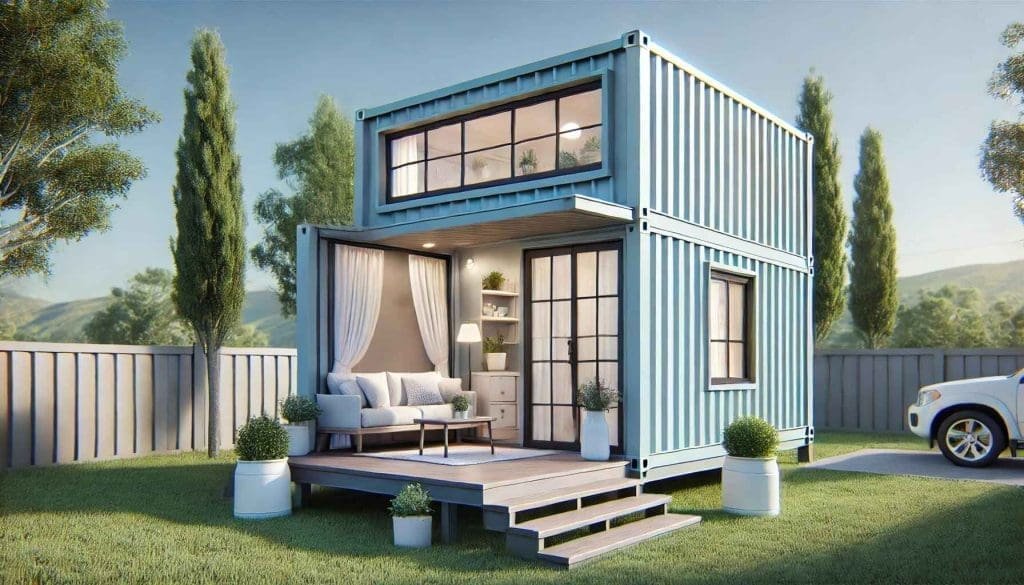
Finding the ideal location for a tiny home is an exciting part of embracing the movable tiny home lifestyle. With the flexibility to set up in a variety of environments, tiny homes offer a unique opportunity to live close to nature, explore urban areas, or settle in serene rural landscapes. However, choosing the right location requires careful consideration of zoning laws, accessibility, and personal preferences. Here are some key factors to guide you in selecting the perfect spot for your tiny home.
1. Zoning Laws and Regulations
One of the most crucial steps in choosing a location for a movable tiny home is understanding local zoning laws and regulations. Not all areas allow tiny homes as permanent residences, so it’s essential to research the rules specific to each area before setting up. Some locations permit tiny homes as accessory dwelling units (ADUs), while others may restrict their use to temporary or seasonal stays. Rural areas often have more flexible zoning laws for tiny homes, while urban locations may have stricter regulations. Be sure to contact local authorities to clarify whether the location allows tiny homes and if there are specific requirements.
2. Accessibility and Infrastructure
When selecting a location for your tiny home, accessibility is key, especially if you plan to relocate the home frequently. Consider the road conditions and accessibility of the area, as some remote locations may have narrow or unpaved roads that make it challenging to tow a tiny home. Additionally, think about access to essential infrastructure like electricity, water, and sewage systems. While many tiny homes are designed with off-grid capabilities, having access to utilities can be an advantage, particularly for long-term stays. For example, Porta Cabins from Saman Portable can easily be adapted to connect with local utilities when they are available.
3. Scenic and Natural Surroundings
One of the best aspects of tiny homes is the ability to live close to nature. Whether you prefer mountain views, beachfront access, or forested areas, tiny homes allow you to choose a setting that aligns with your lifestyle. For nature lovers, the ideal location may be a quiet, secluded spot that offers tranquility and scenic beauty. Consider locations that provide outdoor recreational opportunities like hiking, fishing, or simply enjoying the natural surroundings. Tiny home communities are also growing in popularity, offering a blend of natural settings and community amenities.
4. Urban and Suburban Areas
For those who want a blend of compact living and city convenience, urban and suburban locations can be appealing. Many tiny homeowners choose to live in urban areas to enjoy the cultural, social, and professional opportunities that cities offer. Some urban locations have designated tiny home communities, while others permit tiny homes on private lots or within RV parks. Living in a city offers the benefit of access to local services and public transportation, making it easier to live car-free. The Shipping Container Tiny House by Saman Portable is well-suited for urban settings, with a modern aesthetic that fits seamlessly in metropolitan areas.
5. Seasonal Considerations
When selecting a location, consider the climate and weather patterns of the area, especially if you plan to stay long-term. Tiny homes are designed to be energy-efficient, but climate factors like extreme heat, cold, or heavy rainfall can affect comfort and maintenance. If you enjoy moving with the seasons, choosing locations with mild climates in winter and cooler temperatures in summer can make the tiny home experience more enjoyable. Coastal or mountainous regions can offer mild climates and beautiful views, but it’s essential to prepare for any seasonal weather changes.
Conclusion: Finding the Perfect Location for Your Tiny Home
Choosing the right location for a tiny home involves balancing personal lifestyle preferences with practical considerations. From zoning laws and accessibility to scenic views and seasonal weather, finding the ideal spot can enhance the experience of mobile tiny home living. With options like Porta Cabins and Shipping Container Tiny Houses, the flexibility of tiny living lets you make the most of unique and diverse locations.
Cost Analysis of Owning a Mobile Tiny House
Owning a mobile tiny house can be a cost-effective alternative to traditional housing, but understanding the full range of expenses involved is crucial for planning a budget. From initial purchase to long-term maintenance, the cost structure of a mobile tiny home is unique. Here’s a breakdown of the main costs associated with owning a movable small house.
1. Initial Purchase Price
The upfront cost of a mobile tiny house varies based on factors like size, materials, customization, and amenities. A basic model can start around $20,000, while a fully equipped, customized tiny home with high-end features can range between $50,000 and $100,000. Trailer-based tiny homes tend to be more affordable due to lightweight construction, while durable options, like Shipping Container Tiny Houses, may have a higher upfront cost due to the use of steel and other long-lasting materials. Knowing your priorities and budget can help you choose a tiny home that offers the best balance of affordability and functionality.
2. Transportation and Setup Costs
Unlike a traditional home, a mobile tiny house may need to be moved occasionally, which involves transportation costs. The price of towing a tiny home depends on factors like distance, size, and the type of vehicle required. If you have a trailer-based tiny home, towing can be straightforward with the right truck. However, larger models or container homes may require specialized transport, which can cost anywhere from $500 to several thousand dollars depending on the distance. Additionally, if you need to set up utilities or a foundation at the destination, these costs should be factored into your budget. Portable options like Porta Cabins are designed for ease of transport and setup, making relocation more convenient and cost-effective.
3. Utility and Off-Grid Costs
While utility costs are generally lower in a tiny home due to the smaller size, they still vary based on location and energy needs. Many mobile tiny houses are equipped with off-grid features like solar panels, composting toilets, and rainwater collection systems, which can reduce monthly utility expenses. However, the initial cost of setting up these off-grid systems can be an investment, often ranging from $1,000 to $10,000 depending on the system. If you plan to connect to on-grid utilities, costs for installation or hook-ups should be included in your budget, especially for long-term stays.
4. Maintenance and Repairs
Maintenance costs for mobile tiny houses depend on the materials used and how often the home is moved. Regular maintenance, such as sealing windows, repairing trailer parts, or checking the structural integrity, can help extend the life of the tiny home. Wooden tiny homes may require weatherproofing to prevent rot, while steel-based homes like container houses tend to be more resilient. Budgeting around $500 to $1,500 per year for maintenance can help cover routine repairs and upkeep, ensuring your home remains in good condition over the years.
5. Insurance and Financing Options
Insurance for a mobile tiny home varies based on factors like mobility, construction materials, and location. Mobile homes on wheels may be insured under RV policies, while stationary tiny homes or container homes may qualify for homeowner insurance. Additionally, financing options are available, although they may differ from traditional home loans. Personal loans, RV loans, or specialized tiny home financing programs can help cover the upfront cost if you’re not paying in full. Researching insurance and financing options can provide additional security and flexibility.
Conclusion: Calculating the True Cost of a Mobile Tiny House
Understanding the costs of owning a mobile tiny house can help you make informed financial decisions and set a realistic budget. From initial purchase and setup to long-term maintenance and utility expenses, these homes offer cost-effective, flexible living without many of the high costs associated with traditional housing. By considering these factors, you can determine if a mobile tiny home is the right financial and lifestyle choice for you.
Customization Options for Mobile Small Houses
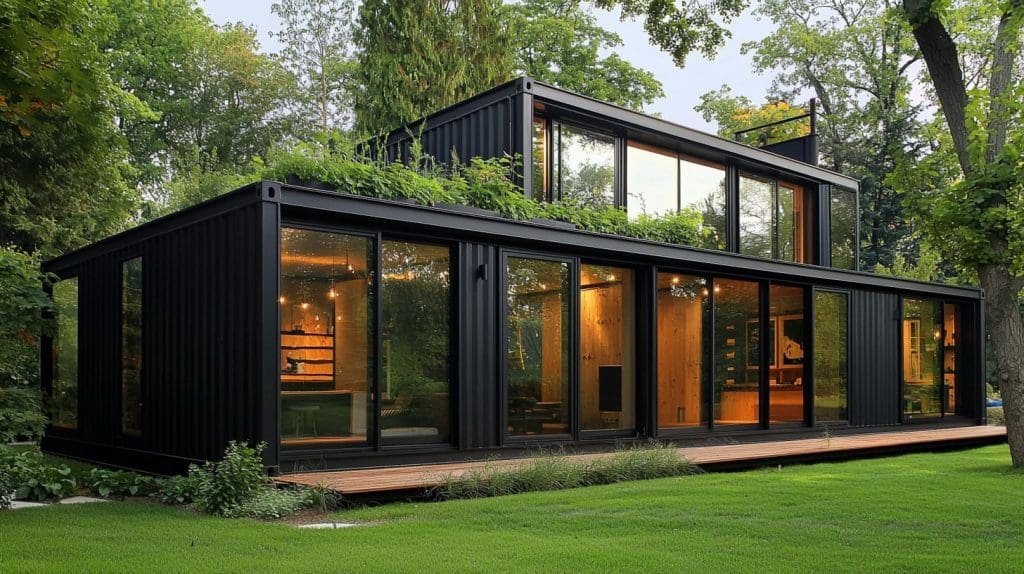
One of the major appeals of mobile small houses is the ability to personalize them according to individual preferences and needs. From layout adjustments to sustainable features, customization options enable tiny homeowners to create a space that reflects their lifestyle, aesthetic tastes, and functional requirements. Here are some popular customization options available for mobile tiny homes.
1. Interior Layout and Floor Plans
A mobile tiny house can be customized with different layouts to optimize space and functionality. Depending on the intended use and number of occupants, you can choose between open floor plans, lofted sleeping areas, and distinct rooms for sleeping, cooking, and living. For example, if you work from home, you may opt for a layout that includes a compact office space or a multi-functional desk area. Creating a custom floor plan allows you to make the best use of the available square footage, whether you prioritize social spaces or private areas. Porta Cabins by Saman Portable offer flexible layouts that cater to a variety of living and working needs, making them an excellent choice for tailored mobile spaces.
2. Exterior Materials and Finishes
Exterior materials and finishes are key elements in customizing a mobile tiny house. From rustic wood to sleek metal panels, homeowners can choose materials that suit their style while considering durability and weather resistance. Wood siding can create a cozy, cabin-like feel, while metal or steel exteriors provide a modern, industrial aesthetic. The Shipping Container Tiny House is a popular choice for those who prefer a modern look with the added benefits of durability and easy maintenance. Additionally, finishes like paint colors, trim, and window framing allow further customization to make your tiny home stand out.
3. Sustainable and Off-Grid Features
For eco-conscious homeowners, adding sustainable features is a top priority. Off-grid capabilities like solar panels, rainwater collection, and composting toilets are increasingly popular, as they support an environmentally friendly lifestyle and allow for self-sufficiency. Solar power can reduce or eliminate dependency on external electricity sources, while water-saving systems contribute to lower environmental impact. These features are especially beneficial for mobile tiny homes that may not always have access to traditional utilities, making them ideal for remote locations or outdoor settings.
4. Multi-Functional Furniture and Storage Solutions
To maximize the limited space in a mobile small house, multi-functional furniture and smart storage solutions are essential. Built-in furniture, such as foldable tables, convertible sofas, and pull-out beds, allows homeowners to create flexible spaces that serve multiple purposes. Storage solutions like wall-mounted shelves, under-seat compartments, and overhead cabinets help keep belongings organized without cluttering the space. With creative storage, a mobile tiny house can feel spacious and comfortable, even with minimal square footage.
5. Personalized Decor and Finishing Touches
Adding personalized decor and finishing touches gives a mobile tiny house character and warmth. Small details like lighting fixtures, artwork, textiles, and plants can transform the atmosphere of a tiny space. Whether you prefer a minimalist look, a rustic vibe, or a vibrant, eclectic style, choosing decor elements that reflect your personality can make a big difference. Simple additions, such as cozy rugs, soft cushions, or stylish curtains, bring comfort and charm, making your tiny house feel like home.
Conclusion: Crafting Your Ideal Mobile Tiny House
With a wide range of customization options, a mobile small house can be transformed into a unique and personalized living space. From layout and materials to sustainable features and decor, these homes offer endless possibilities for creating a comfortable and functional space tailored to your needs. Whether you choose a versatile Porta Cabin or a modern Shipping Container Tiny House, the customization options allow you to enjoy a truly one-of-a-kind mobile living experience.
Practical Tips for Living in a Tiny House Mobile
Living in a tiny house mobile can be a rewarding experience, offering the flexibility of mobility and the simplicity of a minimalist lifestyle. However, adapting to a smaller space requires some thoughtful strategies for maximizing comfort and efficiency. Here are some practical tips to help you make the most of your mobile tiny home.
1. Embrace Minimalism and Declutter Regularly
One of the keys to successful tiny house living is embracing minimalism. With limited space, it’s essential to prioritize what’s truly necessary and let go of items that don’t serve a purpose. Regularly decluttering helps keep the space organized and prevents it from feeling cramped. Invest in items that serve multiple functions and avoid over-decorating. This approach creates a streamlined, clean living environment that enhances the sense of space within your tiny home.
2. Maximize Vertical Space
In a mobile tiny house, every square foot counts, including vertical space. Use the walls for storage solutions such as wall-mounted shelves, hooks, and pegboards. These additions help keep floors clear and maintain an open, spacious feel. You can also consider adding lofted sleeping areas, which free up floor space for other activities. Vertical storage options not only improve organization but also make it easier to access frequently used items without creating clutter.
3. Invest in Multi-Functional Furniture
Multi-functional furniture is essential in a tiny house mobile setup. Items like foldable tables, convertible sofas, and murphy beds provide flexibility without taking up too much space. For example, a table that folds up against the wall when not in use allows you to repurpose the area for other activities. Similarly, a sofa that converts into a bed is perfect for accommodating guests. Multi-functional furniture allows you to make the most of your small space while maintaining a comfortable, functional layout.
4. Create Zones for Different Activities
To make tiny living more manageable, it’s helpful to create zones within your home for different activities, such as sleeping, cooking, working, and relaxing. Although the space may be compact, defining each area helps prevent overcrowding and allows you to transition smoothly between activities. For instance, designate one wall for kitchen essentials and keep the opposite side open for seating. This approach helps keep your tiny home organized and easy to navigate.
5. Prioritize Efficient Storage Solutions
In tiny house living, efficient storage solutions make a world of difference. Look for storage options that utilize every available space, including under the bed, in built-in benches, or along the walls. For example, Porta Cabins from Saman Portable can be customized with built-in storage solutions, making them an excellent choice for tiny homes that need practical storage options. Efficient storage keeps everything in its place and makes the space feel larger and less cluttered.
6. Make the Most of Outdoor Space
If you’re stationed in one place for a while, take advantage of outdoor space to extend your living area. Creating a small patio or deck with seating allows you to enjoy the outdoors and makes the tiny home feel more spacious. Use outdoor areas for activities like dining, relaxing, or even setting up an outdoor kitchen. This additional space provides an extra layer of comfort and allows you to enjoy the surroundings fully.
7. Keep Utility Costs Low with Energy-Efficient Features
Living in a tiny house mobile offers a great opportunity to embrace energy efficiency. Consider incorporating features like solar panels, energy-efficient appliances, and LED lighting. Off-grid features reduce utility costs and allow for self-sufficiency, particularly when traveling to remote locations. The Shipping Container Tiny House by Saman Portable can be equipped with energy-efficient features, making it ideal for sustainable tiny living on the go.
Conclusion: Adapting to Tiny House Mobile Living
Living in a mobile tiny house requires some adjustments, but with thoughtful organization, multi-functional furniture, and efficient storage, you can create a comfortable, enjoyable space. By following these practical tips, you can make the most of tiny house living, enjoying both the freedom of mobility and the benefits of a minimalist lifestyle.
Conclusion: Why a Movable Small House is a Smart Choice
Choosing a movable small house as your living space opens up a world of flexibility, affordability, and simplicity. These homes cater to a variety of lifestyles and needs, making them a versatile option for anyone looking to live minimally without sacrificing comfort. By embracing tiny home living, homeowners can enjoy the freedom to travel, reduce their environmental impact, and live more sustainably.
Movable small houses are not just cost-effective; they also provide a unique lifestyle centered around mobility and adaptability. Whether used as a full-time residence, a vacation retreat, or a mobile office, these compact homes allow residents to live wherever they choose, experiencing different environments and communities without the limitations of traditional housing. With options like Porta Cabins for compact, customizable spaces or Shipping Container Tiny Houses for a more modern, resilient structure, there are numerous choices to suit personal preferences and functional needs.
As more people seek alternative lifestyles that emphasize simplicity, minimalism, and eco-conscious living, movable small houses continue to grow in popularity. These homes not only promote efficient use of resources but also encourage a lifestyle that prioritizes experiences and connections over material possessions. For those interested in learning more about this unique way of living and the high-quality options available, Saman Portable provides a range of tiny home solutions that blend innovation with functionality. To learn about our company and commitment to sustainable housing, please visit our About Us page. If you’re ready to start planning your own movable small house or have any questions, reach out through our Contact page.
In conclusion, a movable small house is an excellent choice for anyone looking to downsize, reduce their environmental footprint, and embrace the freedom to live on their own terms. With thoughtful design, efficient features, and personalized customization, these homes offer an enriching and adaptable living experience that can evolve with your needs and aspirations.
 Container Cafe
Container Cafe

















































































